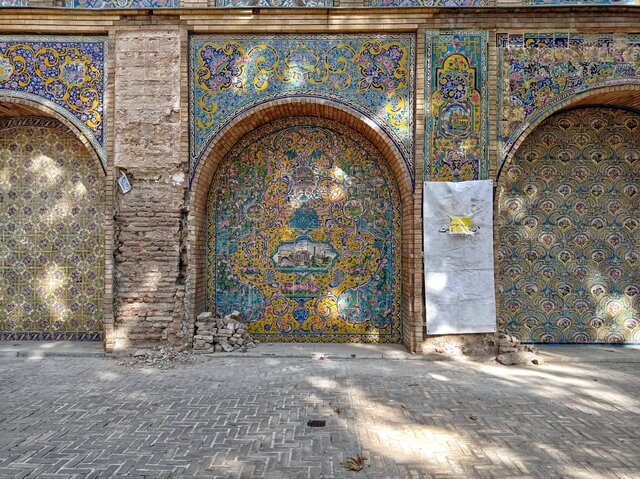Restorers launch project at Tehran’s UNESCO-tagged palace

TEHRAN – A team of restorers and cultural heritage experts have commenced working on some tile work that covers the exterior walls of Golestan Palace located in downtown Tehran, adjacent to the Grand Bazaar of the Iranian capital.
Some scaffolds have been installed at the entrance of Kharimkhani edifice, overlooking the yard of the UNESCO-registered complex, where rows of tile work had been collapsed previously, ISNA reported on Sunday.
According to instructions attached to a nearby wall, the restoration project entails the following steps: “Documentation, pathology, coding of tiles, separation, and removal of [damaged] tiles, cleaning and separation of surface sediments and desalination, drying of tiles, fixing of the peeled glazes, joining of broken tiles, application of gypsum putty suitable for reconstruction, installation of tiles on walls, injection of mortar and strengthening of the back of the tiles, color balancing of the patterns and final stabilization.”
A destination for domestic and international travelers, Golestan Palace is located in the heart and historic core of Tehran. The palace complex is one of the oldest in the Iranian capital, originally built during the Safavid dynasty (1501–1736) in the historical walled city.
Following extensions and additions, it received its most characteristic features in the 19th century, when the palace complex was selected as the royal residence and seat of power by the Qajar ruling family (1789-1925). At present, the Golestan Palace complex consists of eight key palace structures mostly used as museums and the eponymous gardens, a green shared center of the complex, surrounded by an outer wall with gates.
UNESCO has it that the complex exemplifies architectural and artistic achievements of the Qajar era including the introduction of European motifs and styles into Persian arts.
AFM/MG

Leave a Comment